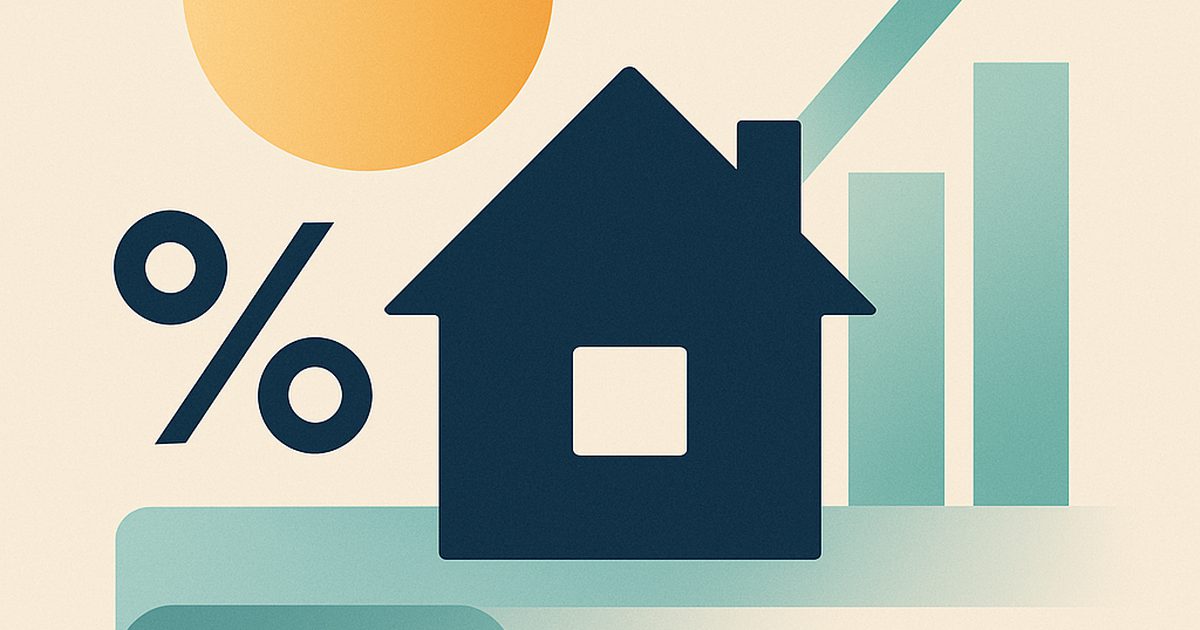TL;DR
- LMI protects lenders when borrowers put down less than 20 % of a property’s value.
- The premium rises with larger loans, higher loan‑to‑value ratios (LVR), and certain loan types.
- You can cut or eliminate the fee by:
- Saving a larger deposit.
- Shopping for lenders that use lower‑cost insurers.
- Choosing low‑deposit products or government‑backed schemes.
- Using a guarantor to avoid LMI entirely.
- A well‑planned deposit strategy can save you thousands of dollars over the life of your loan.
What Is Lenders Mortgage Insurance (LMI)?
Lenders Mortgage Insurance is a specialised policy that protects the lender if the borrower defaults on the loan. Unlike typical insurance that covers the policyholder, LMI is paid by the borrower and is designed to cover the lender’s loss should the borrower be unable to repay the mortgage.
– Why it exists: Australian lenders require LMI when the borrower’s deposit is less than 20 % of the property’s purchase price, i.e. when the loan‑to‑value ratio (LVR) is 80 % or higher. This protects the lender against the higher risk of default that comes with a larger loan relative to the property’s value.
– Who pays and who benefits: The borrower pays the premium, but the benefit is to the lender, not the borrower. The premium is usually added to the loan balance and repaid over the life of the mortgage.
[2]
How LMI Is Calculated and What Factors Influence the Cost
The premium is not a fixed fee; it is calculated based on several interrelated factors. Understanding these can help you manage the cost.
| Factor | Effect on LMI Cost |
|---|---|
| Loan amount | Larger loans increase the insurer’s exposure, raising the premium. |
| Deposit size / LVR | A smaller deposit (higher LVR) means a greater risk of loss, so the premium climbs. |
| Lender’s insurer | Different lenders partner with different insurers, leading to variations in premium rates. |
| Loan type & borrower profile | Fixed, variable, or interest‑only loans, as well as whether the borrower is a first‑time buyer or an investor, can influence the cost. |
[1]
Loan Amount
The premium is typically a percentage of the loan amount. For example, a 3 % premium on a $400,000 loan would be $12,000. Because the premium is added to the loan balance, a larger loan not only costs more upfront but also increases the amount of interest you pay over time.
Deposit Size / LVR
The LVR is calculated as the loan amount divided by the property’s purchase price. A 15 % deposit on a $500,000 home results in an LVR of 85 %. The higher the LVR, the higher the premium. Borrowers can reduce the LVR by saving a larger deposit, which directly lowers the LMI cost.
Lender’s Insurer
Not all lenders use the same insurer. Some insurers offer lower rates or more flexible premium structures. Shopping around can therefore yield significant savings.
Loan Type & Borrower Profile
Certain loan structures (e.g., interest‑only or high‑risk products) and borrower categories (e.g., investors vs. owner‑occupiers) can affect the premium. Lenders assess the overall risk profile before quoting an LMI rate.
When Is LMI Required in Australia?
LVR Thresholds
The standard rule is that LMI is mandatory when the LVR is 80 % or higher. That means if your deposit is less than 20 % of the purchase price, you will almost certainly need LMI unless you qualify for a special exemption.
[2]
First‑Time Buyer vs Investor
First‑time buyers sometimes qualify for lower LMI rates or special products that waive the insurance, especially if they are part of government schemes. Investors, on the other hand, may face higher premiums because they are viewed as higher risk.
Government Schemes
The Australian Government offers schemes such as the First Home Loan Deposit Scheme (FHLDS) and the First Home Owner Grant (FHOG). These can help borrowers meet the 20 % deposit threshold or provide guarantees that reduce or eliminate the need for LMI. Eligibility criteria vary, so it’s essential to check the latest government guidelines.
[2]
The Financial Impact of LMI on Your Home Loan
Upfront Cost vs Ongoing Payments
While LMI is paid upfront, it is usually added to the loan balance and repaid over the life of the mortgage. This means the premium is effectively a hidden interest charge, spreading the cost across many years.
Total Cost Over the Life of the Loan
A 3 % premium on a $400,000 loan adds $12,000 to the balance. If you’re paying 3 % interest on a 30‑year loan, that extra $12,000 results in an additional $4,320 in interest over the term. The longer the loan, the greater the cumulative cost.
Example Calculations
| Scenario | Deposit | LVR | LMI Premium | Total Extra Cost (interest) |
|---|---|---|---|---|
| 15 % deposit on a $500,000 home | $75,000 | 85 % | 2 % of loan ($10,000) | $3,600 |
| 10 % deposit on a $500,000 home | $50,000 | 90 % | 3 % of loan ($15,000) | $5,400 |
[1]
These figures illustrate how a modest increase in deposit can translate into thousands of dollars saved.
Practical Strategies to Reduce or Eliminate LMI
1. Save a Larger Deposit
The simplest way to avoid LMI is to meet the 20 % deposit threshold. Even a 5 % bump in your deposit can bring the LVR down enough to eliminate the insurance requirement.
2. Shop for Lenders and Insurers
Different lenders use different insurers, and rates can vary significantly. A mortgage broker can compare multiple lenders and help you find the lowest premium for your circumstances.
3. Low‑Deposit Loan Products and Schemes
Some lenders offer products specifically designed for low‑deposit borrowers. These may include reduced LMI rates or special terms for first‑time buyers. Government schemes such as the FHLDS also provide guarantees that can replace the need for LMI.
4. Guarantor Loans
If you have a family member willing to act as a guarantor, you can secure a loan with a deposit less than 20 % without paying LMI. The guarantor’s creditworthiness essentially replaces the insurance requirement.
5. LMI Repayment Options
Some lenders allow you to pay the LMI premium in a lump sum or spread it over a shorter period, reducing the overall interest burden. Discuss these options with your lender.
Common Misconceptions About LMI
| Misconception | Reality |
|---|---|
| LMI protects the borrower | LMI protects the lender, not the borrower. |
| LMI is a fee, not insurance | It is an insurance policy that covers the lender’s loss on default. |
| LMI can be waived by simply paying more | LMI is waived only if you meet the 20 % deposit threshold or qualify for a government scheme. |
[2]
How to Plan Your Home Loan to Avoid LMI
Timeline for Saving Deposit
Create a realistic savings plan. If you need a 20 % deposit on a $500,000 home, aim for $100,000. Break this into monthly targets and track progress with a budgeting app or spreadsheet.
Budgeting Tips
- Automate savings: Set up a direct debit to a high‑interest savings account immediately after each paycheck.
- Cut discretionary spending: Identify non‑essential expenses that can be reduced or eliminated.
- Increase income: Consider a side gig, overtime, or a higher‑paying role to accelerate savings.
Working with a Mortgage Broker
A broker can provide a personalised comparison of lenders, identify suitable low‑deposit products, and negotiate better terms. They can also help you navigate government schemes and assess whether a guarantor loan is viable.
Conclusion
Lenders Mortgage Insurance is a necessary cost for many Australians who cannot meet the 20 % deposit threshold. However, its impact can be minimised or avoided through strategic planning. By saving a larger deposit, shopping around for lower‑cost insurers, leveraging low‑deposit products or government schemes, and considering guarantor loans, borrowers can reduce the overall cost of their home loan and improve long‑term affordability.
Understanding the mechanics of LMI, the factors that drive its cost, and the practical ways to manage it equips you to make informed decisions and potentially save thousands of dollars over the life of your mortgage.
References
- Lenders Mortgage Insurance (LMI) Explained | Learn Stryve Finance | Simple Loan Solutions — stryve.com.au — https://www.stryve.com.au/home-loan-tips-mistakes/lmi-explained
- Lenders Mortgage Insurance (LMI) Explained: What It Is and How to Avoid It — sapphirefinance.com.au — https://www.sapphirefinance.com.au/post/what-is-lenders-mortgage-insurance-lmi



